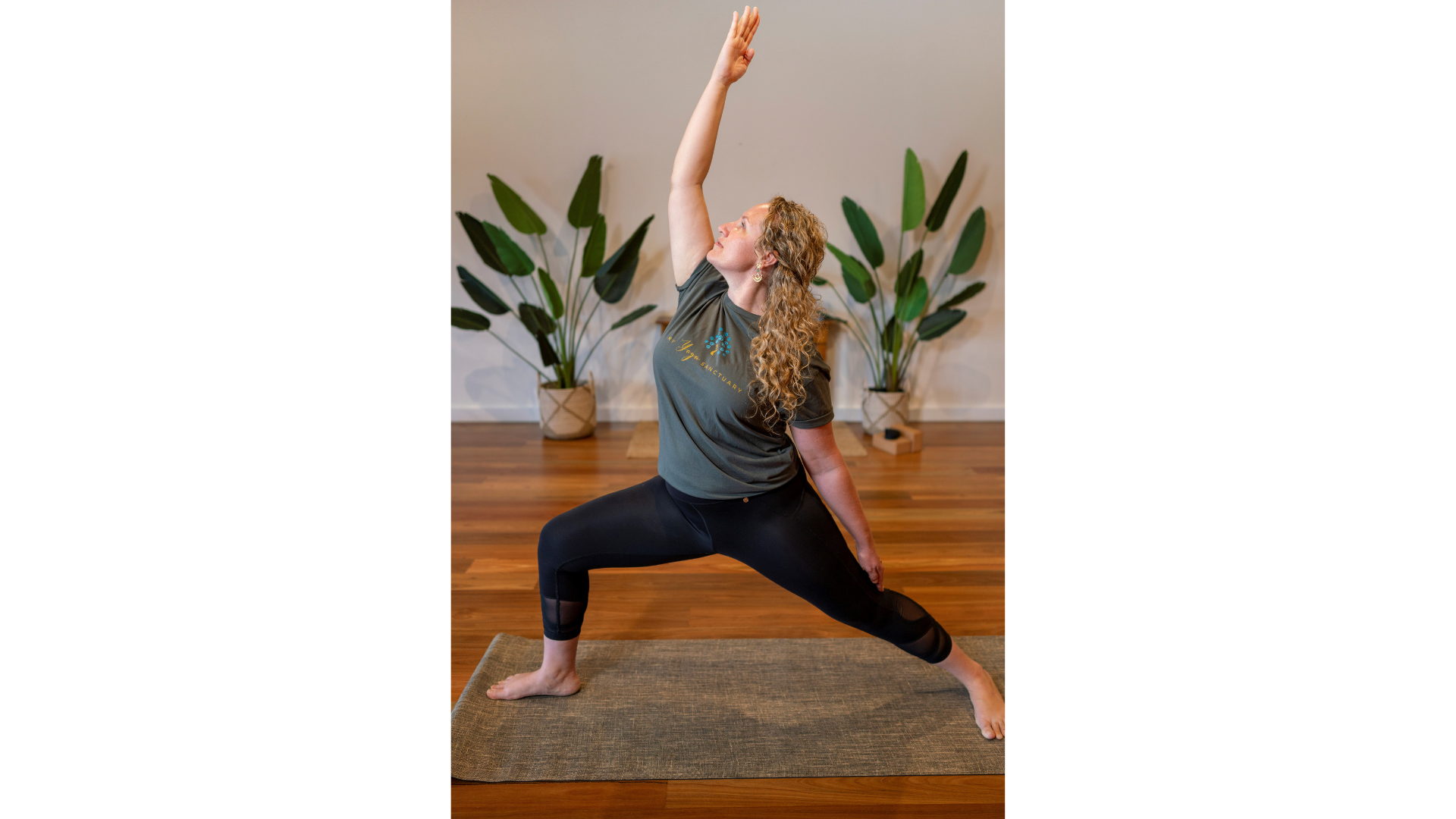Being immensely popular, flow yoga is taught in most yoga studios. Also known as Vinyasa yoga, it is fun, fast and strenuous. Yoga flows are usually based around the Sun Salutation series with other poses interwoven along the way. Typically, the poses are only held for one or two breaths and often poses are moved into on an inward breath and straight back out on the outward breath. A typical sequence might go like this; inhale to chaturanga (or plank), exhale to Downward facing dog, inhale raise the right leg, exhale swing it through between the hands, and inhale into Warrior 1, exhale and transition back to Down dog, then inhale to left leg up, etc.
Some people who might find the pace of hatha yoga a little tedious find in a flow class there is no time to get bored as the restless mind is contained by continual movement.
Flows offer a wonderful opportunity for the body to warm up and be open to achieving more complex forms of a stretch. In planning a class, the teacher might on the first Sun Salute, take the class into Warrior 1, then next time round they go into Crescent Moon, then finally they have developed the flexibility in the hip to move into Pigeon. Because Pigeon is also a back arching pose, the flows would also have included some gentle back arching poses to warm up the back muscles.
Flows are for people who like to build up a sweat, to work their bodies a bit harder and easily engage the mind. But they are not great for people who are new to yoga, who have injuries or who are looking for a more mindful or winding down type of session.
Because the class is moving so quickly from one pose to another, there is little time to check alignment. Little time to check that the pose is safe and that it is being done within one’s individual limitations. The teacher can fire a few helpful instructions here and there but basically it is up to the students’ own knowledge to be aware and safe. Therefore, people new to yoga are advised to thoroughly learn the poses and how to implement them according to their own body before participating in flow classes.
Yoga injuries are all too common these days. Stay aware during your class of how your body is reacting. Common slip ups during a flow are the shoulders getting tired and losing strength to safely maneuver into and out of the many down dog – chaturanga – up dog sequences, or missing safe knee alignments in the standing poses.
While some injuries can take years to build up enough for you to be aware of them, other times if you experience any pain which doesn’t go away in a day or two you can know it’s time to take a break from flows and let your body rest.
By Vrndavan Dasi
Founder and Principal of Veda Yoga Teacher Training
